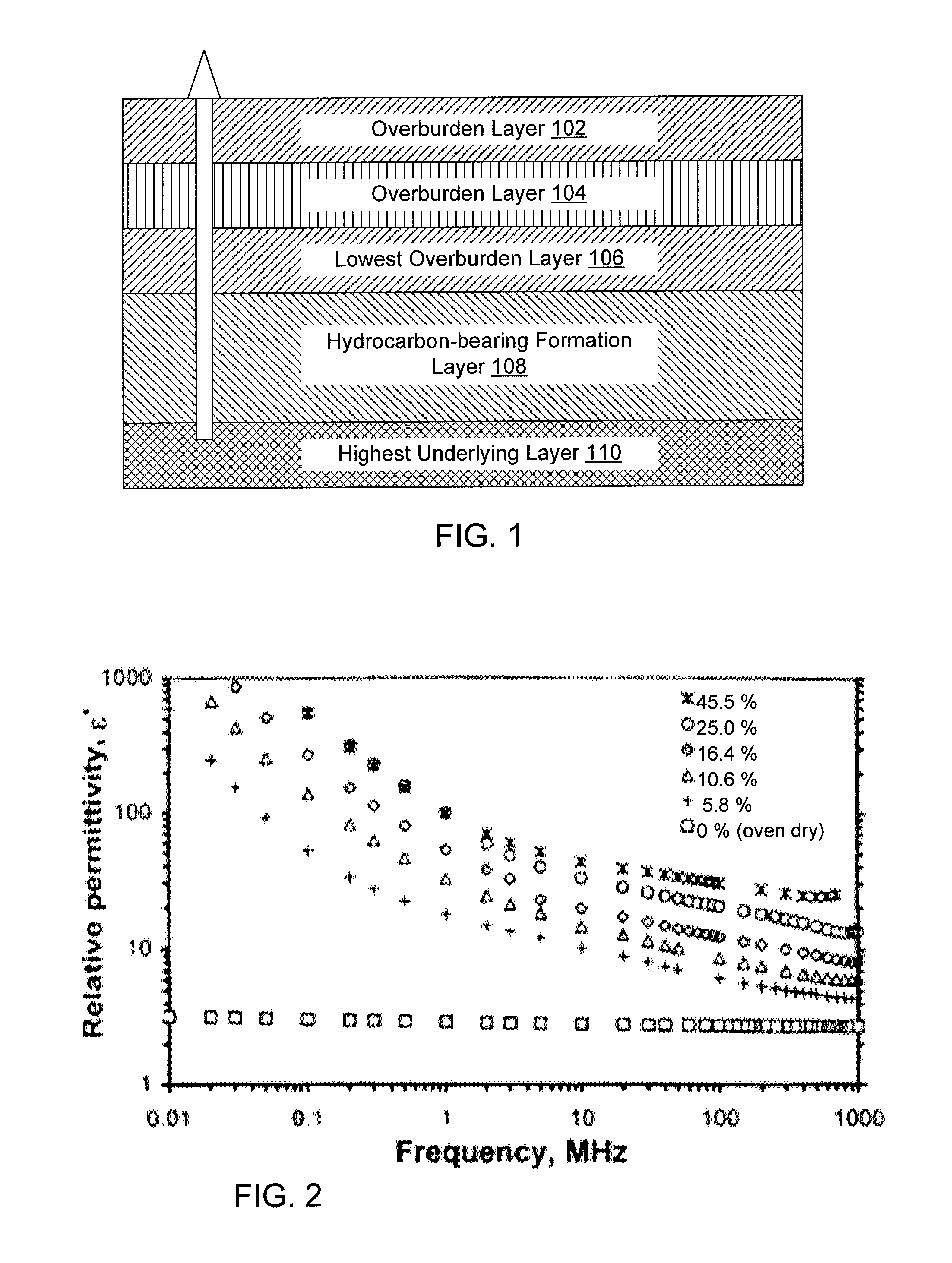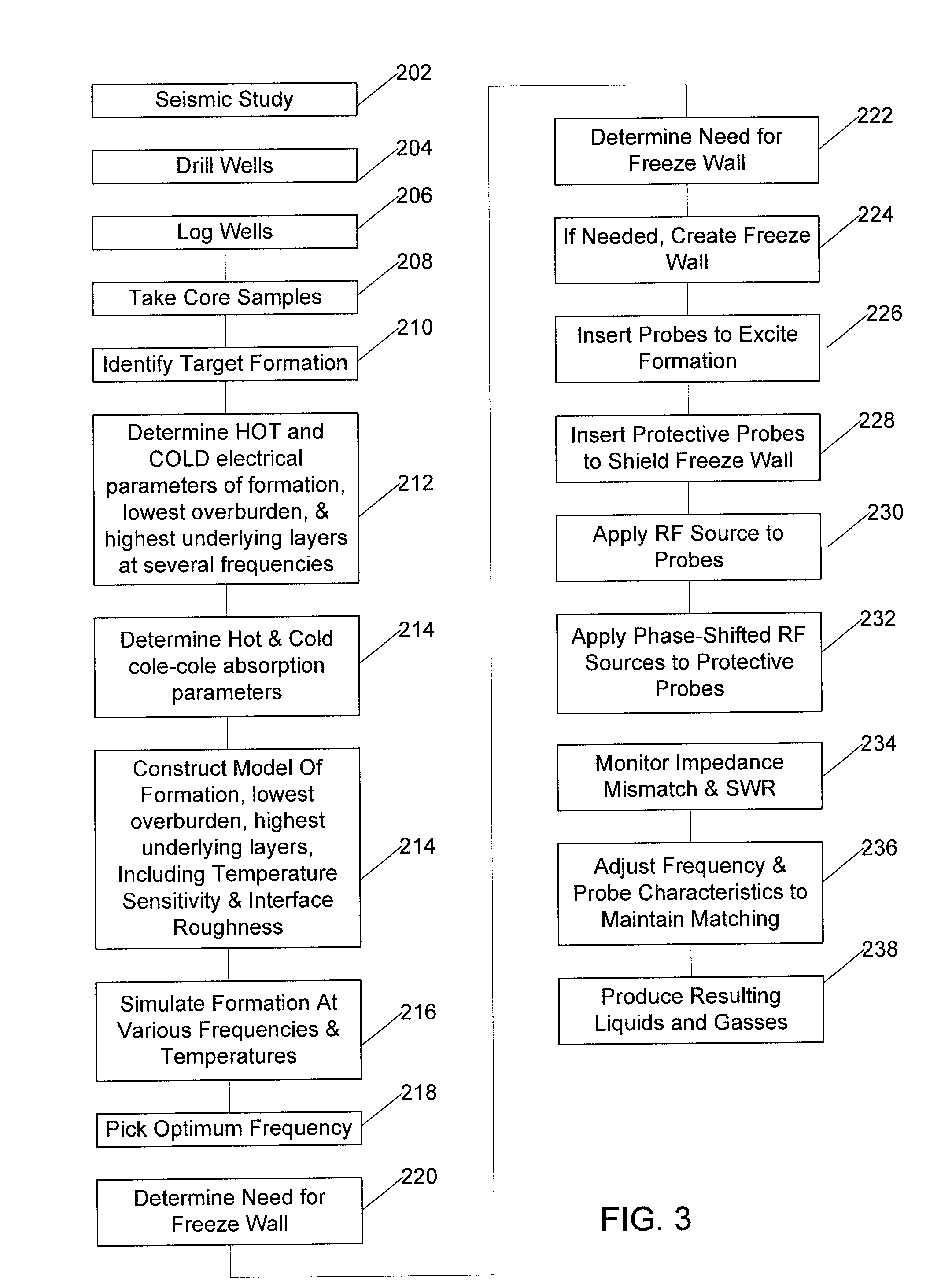System and method for extraction of hydrocarbons by in-situ radio frequency heating of carbon bearing geological formations
a geological formation and radio frequency heating technology, applied in the direction of fluid removal, borehole/well accessories, insulation, etc., can solve the problems of large environmental problems, insufficient mobility, and large labor and heavy machinery,
- Summary
- Abstract
- Description
- Claims
- Application Information
AI Technical Summary
Problems solved by technology
Method used
Image
Examples
Embodiment Construction
RF Properties of Oil and Rock
Conductive Rock
[0043]Generally, overburden and underlying rock layers tend to have larger water content than hydrocarbon-bearing formations do. Since water, especially salty water, tends to have greater conductivity than dielectric rock, these formations are for purposes of this document often classifiable as conductive rock.
Dielectric Rock
[0044]Dielectric rock is rock that is a less conductive media than is conductive rock. This is often because presence of large amounts of nonpolar organic compounds tends t exclude conductive water from the formation.
Boundaries
[0045]Reflection and leakage takes place as a RF wave propagates across at the interface from one medium to another medium if the media differ in electrical properties. The different electrical properties of the media are distinguished by the constitutive parameters permittivity ∈, permeability μ, and conductivity σ.
[0046]For the most dielectric media, permittivity is the significant parameter to...
PUM
 Login to View More
Login to View More Abstract
Description
Claims
Application Information
 Login to View More
Login to View More - R&D
- Intellectual Property
- Life Sciences
- Materials
- Tech Scout
- Unparalleled Data Quality
- Higher Quality Content
- 60% Fewer Hallucinations
Browse by: Latest US Patents, China's latest patents, Technical Efficacy Thesaurus, Application Domain, Technology Topic, Popular Technical Reports.
© 2025 PatSnap. All rights reserved.Legal|Privacy policy|Modern Slavery Act Transparency Statement|Sitemap|About US| Contact US: help@patsnap.com



